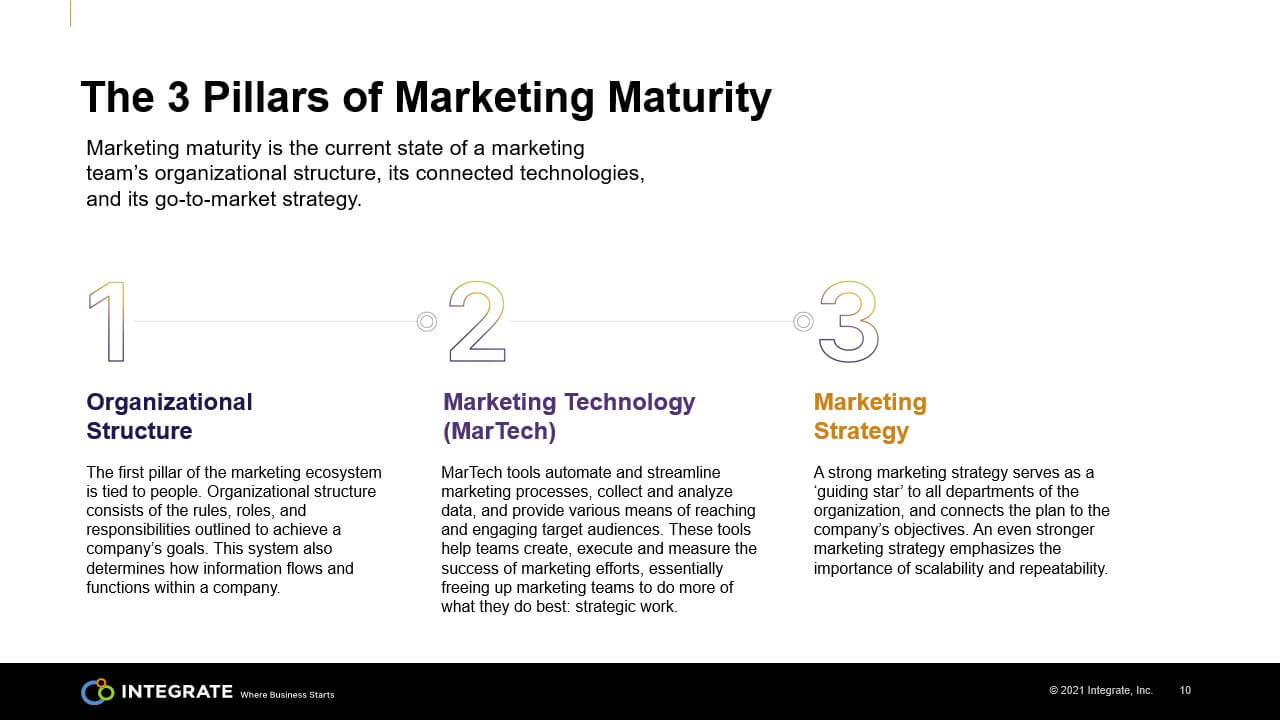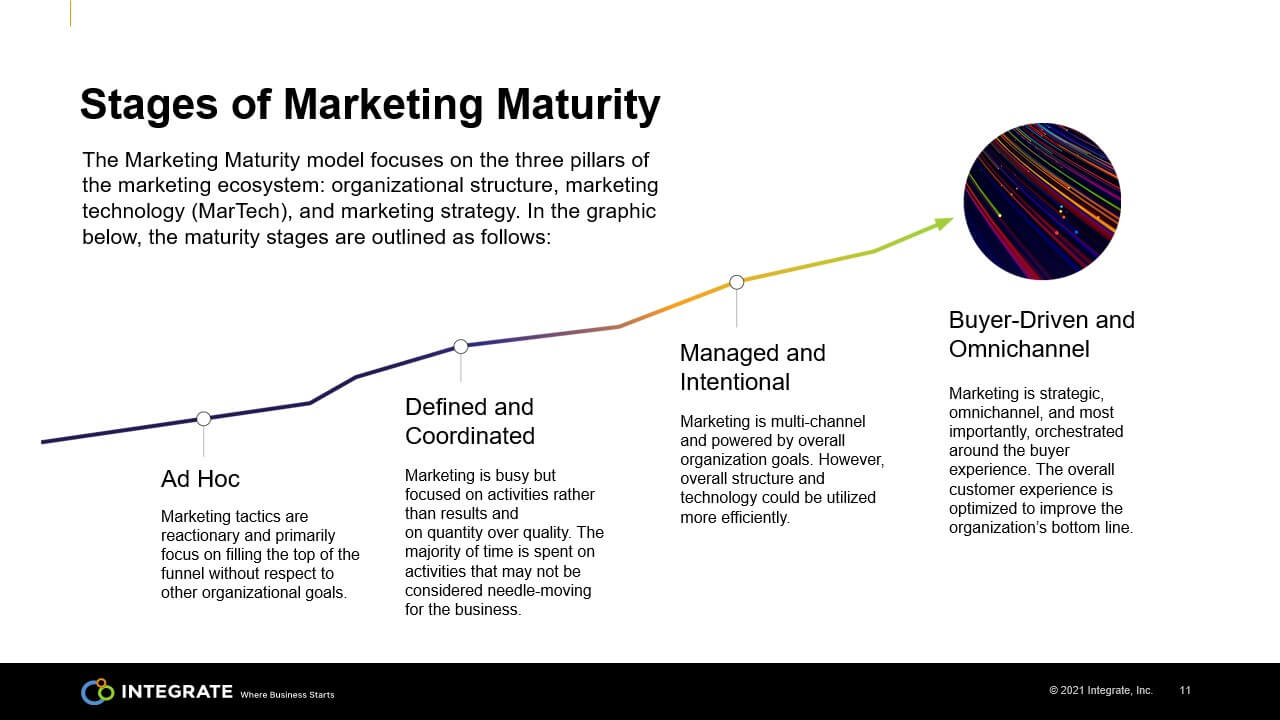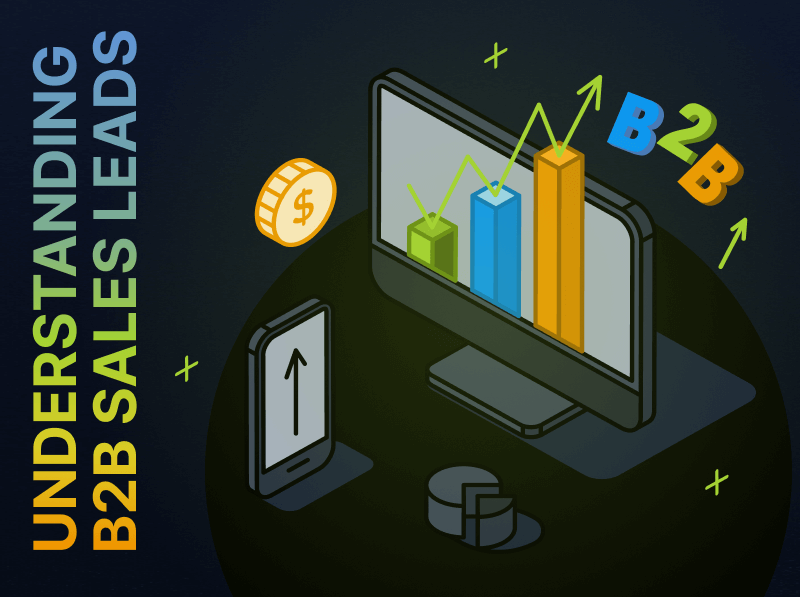B2B Game Changers Recap: 4 Ways to Optimize Your B2B Marketing Teams in 2022
2021 presented quite a few challenges for the B2B marketer. Buyers have evolved and are no longer waiting for businesses to connect with them via traditional methods. The pandemic has ushered in a digital-first experience, allowing buyers to conduct their own research and leverage self-serve options as they chart their own paths to purchase. As a result, marketing strategies must undergo necessary changes to accommodate this new world.
We decided to partner with Heinz Marketing last year to properly understand how B2B marketers can succeed in this new, buyer-driven world. We surveyed over 200 marketers globally to put together The State of Marketing Maturity report in an effort to uncover the fundamental shifts B2B marketers are experiencing today.
At our B2B Game Changers virtual conference Matt Heinz facilitated an in-depth analysis into the research and highlighted the Marketing Maturity Model, an effective tool for analyzing your marketing strategies, org structures and technology. He also shared some of his key findings and takeaways which are highlighted below.

1. Analyze Where Your Team Falls Within the Marketing Maturity Model
As marketers are working through their 2022 planning, Heinz advises taking the “opportunity to do a deep dive with your team. Analyze where they fall within this marketing maturity curve and be honest about how your team is working today, and where there are opportunities for growth-minded people to work differently.”
Take the time to understand where your teams are positioned in relation to the three pillars of marketing maturity.
- Org Structure – Evaluate your org structure and its efficacy in achieving company goals.
- Martech – Are your tools actually freeing up time for your teams to focus on strategic work?
- Marketing Strategies – Are your current strategies acting as a guiding force for all departments to align under? Are they scalable? Able to be repeated?
Once marketing leaders and teams have a better understanding of how they rank in terms of the maturity of their people, processes, and technology, they can begin to work on making changes aimed at achieving the ideal omnichannel experience.
2. Structure Teams with Collaboration and Transparency in Mind
“Functional alignment is needed now more than ever,” according to Heinz. “Functions like Revenue Marketing, ABM and Demand Generation find it more difficult to achieve their goals within the current organizational structure.”
Evaluate your teams and ensure that they are no longer engaged in siloed tactics. Heinz suggests that conversations should be centered around strategies focusing on a buyer-driven, omnichannel experience, and getting to that “nirvana stage for marketers: the place where our efforts as marketers, our efforts as go-to-marketing teams are fully aligned, directly aligned with the buying process.”
Teams that operate at high levels of marketing maturity are aligned and agile and operate cohesively with centralized processes that lead to greater revenue.
3. Adopt a Buyer-Focused Mindset to Meet Revenue Goals
Surveyors were asked to list ways they think they can improve the effectiveness of their marketing strategy. The number one response? Gain greater insight into buyer habits.
The case for omnichannel, buyer-centric marketing is strong. According to Heinz, 48% of optimized teams who center their marketing ecosystem around the buyers expect to meet their revenue goals in 2021. Creating meaningful experiences from the buyer’s first touchpoint to their last will help accelerate and enable the decision-making process.
Marketers who operate at the highest level of marketing maturity can quickly adapt to the needs of their buyers no matter the channel or device.
4. Optimize your martech based on your strategy and goals
7 out of 10 ABM and Revenue Marketing respondents feel their marketing technology lacks the support necessary to meet their goals. With thousands and thousands of marketing technology tools available, the report suggests that it is not about having the biggest stack, but more about having the right tools and the best orchestrations amongst them.
Heinz states that we want to go move away from “tools that drive activities,” and venture towards “systems that drive performance.”
Operating at high levels of maturity in technology allows cross-functional teams alignment around a single view of their accounts and buyers. As efficient technology begins to carry the burden of more manual tasks, marketing teams find they have more time to dedicate towards strategic efforts.
Chart a Path to Success in 2022
Our research with Heinz Marketing found that highly effective teams with synced organizational structures and seamlessly integrated martech with cross-channel connections have more success achieving marketing goals, delivering a personalized relevant buying experience, and generating higher ROI.
Where does your team sit on the Marketing Maturity curve?

It’s evident the B2B marketer now exists in a buyer’s world, so it is our responsibility to evolve and meet their needs.
You can watch the full session from this year’s B2B Game Changers virtual conference featuring Matt Heinz on demand now, along with all our other keynotes and sessions. You can also download the full State of Marketing Maturity report.









